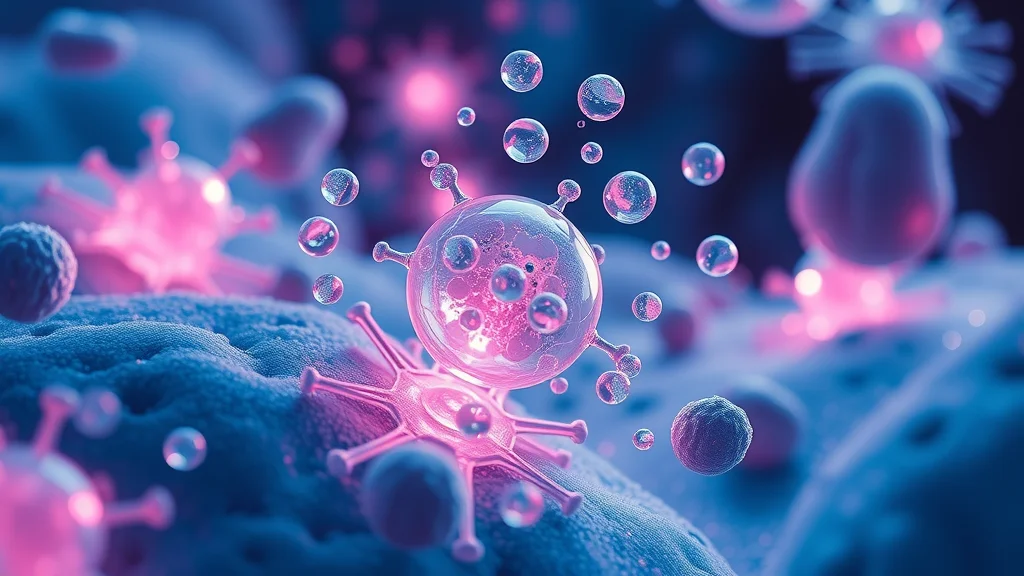Did you know that up to 80% of visible signs of skin aging are caused by external factors—mainly sun exposure—rather than simply getting older? This eye-opening insight is the cornerstone of a revolution sweeping through skincare: instead of chasing wrinkles after they appear, the focus is shifting toward proactive strategies that empower your skin to stay healthy and youthful much longer. Welcome to the world of skin longevity, where cutting-edge science meets daily routine, and where high-performance treatments like PRP and exosomes are raising the bar for what’s possible in modern skin health.
Startling Insights: The Science Behind Skin Longevity

It’s easy to think of skin aging as an inevitable consequence of birthdays, but the real story is far more dynamic. Recent breakthroughs in longevity science reveal that everything from sun exposure to pollution and stress shapes the fate of our skin cells just as powerfully as time itself. With this in mind, skin longevity emerges not just as another beauty buzzword, but as a scientific approach centered on protecting and renewing the essential components of our skin barrier and cellular structures.
Consider the fact that fine lines and dullness aren’t simply the result of aging skin cells, but often come from preventable external damage. By understanding the interplay between chronological age and environmental factors, we open the door to effective, evidence-backed strategies that go beyond temporary fixes. Instead, we can address the root causes—reducing cellular senescence, supporting robust cell turnover, and boosting the resilience of our skin barrier for sustained skin health. This is the promise of skin longevity.
Why Skin Longevity Is Redefining Modern Skincare
Skin longevity is turning the beauty industry on its head by shifting the focus from chasing after visible signs of aging to proactively supporting lasting healthy skin. We’re now moving beyond the surface—gone are the days when a simple skincare routine was about hiding or reversing damage. Instead, rejuvenation now happens at the cellular level, thanks to advancements in growth factor therapy, PRP, and exosome treatments.
"Up to 80% of visible signs of skin aging are attributed to external factors like sun exposure – a focus on skin longevity offers a powerful new approach."
These new approaches deliver more than cosmetic improvements—they create a future where skin health is preserved, where things like collagen and elastin production are naturally optimized, and where the aging process is slowed long before visible signs appear. The next generation of skin science is here and it’s all about keeping your skin not just looking young but functioning at its best.
The New Era: Skin Longevity and Its Growing Importance
Increased life expectancy and quality of life
Surge in regenerative medicine
Consumer demand for non-invasive skin health solutions
Awareness of visible signs of aging and preventative skincare

As people live longer and demand greater quality from their later years, maintaining a vibrant, youthful appearance becomes a key part of overall well-being and confidence. The rise of regenerative therapies like PRP and exosomes reflects a growing recognition that non-invasive, science-based methods can powerfully support long-term skin health. Whether you’re just starting to think about prevention or seeking to optimize your current routine, skin longevity is a universal concern—offering something meaningful for every age and every lifestyle.
What You'll Learn About Skin Longevity
The biological basis of skin longevity and aging
How PRP and exosomes work for skin longevity
Practical ways to promote skin health and slow skin aging
Expert-backed insights into optimizing your skincare routine for long-term results
This guide brings you the latest research, clinical outcomes, and real-world strategies so you can make informed decisions on your journey toward optimal skin longevity. Here’s what you need to know to unlock long-lasting, radiant, and healthy skin.
Understanding Skin Longevity: Foundations and Factors
Defining Skin Longevity and Its Role in Healthy Skin

At its core, skin longevity is the pursuit of youthful and healthy skin over an extended period—by targeting both the visible and cellular mechanisms of skin aging. This doesn’t just mean minimizing fine lines or wrinkles once they appear; it’s about creating the optimal conditions for your skin cells to regenerate, repair, and resist common stressors. The goal is to build resilience at every level: from the surface barrier function all the way down to the DNA inside each skin cell.
Unlike the reactive traditions of anti-aging, the skin longevity movement embraces both prevention and active repair. It emphasizes holistic lifestyle choices, advanced regenerative therapies, and understanding the critical role your skin’s natural biology plays in how you look and feel. Investing in skin longevity means investing in a long-term strategy focused on cell turnover, the elimination of senescent cells (sometimes called “zombie cells”), and supporting the body’s natural collagen and elastin production for a lifetime of bounce, clarity, and glow.
Major Causes of Skin Aging: From Chronological Age to Zombie Cells
Chronological age and its effect on skin cell turnover
Cellular senescence and the formation of zombie cells
Environmental contributors: Sun, pollution, and stress
Breakdown of skin barrier and visible signs
Skin aging is a complex process influenced by more than just the ticking of the calendar. The aging process is jump-started by a combination of chronological age (the natural passing of time) and extrinsic stressors that accelerate cellular aging. As skin cells grow older, their ability to divide and repair slows—a phenomenon called cellular senescence. These “zombie cells” linger in the skin, releasing inflammatory signals and contributing to loss of firmness, roughened skin texture, and the breakdown of the protective skin barrier.
What speeds this up? Sun exposure, pollution, blue light, physical and emotional stress, and even poor lifestyle habits. All of these lead to increased oxidative stress (damage from free radicals) that quickens the appearance of visible signs of aging like fine lines, pigmentation, and thinning skin. Protecting your skin from these external factors—and supporting robust cell turnover—are central tenets of skin longevity.
How Skin Longevity Differs From Anti-Aging
Comparing Skin Longevity vs. Traditional Anti-Aging Approaches: | ||
Factor |
Skin Longevity |
Traditional Anti-Aging |
|---|---|---|
Focus |
Cellular health, prevention |
Symptom reduction, reversal |
Key Methods |
PRP, exosomes, holistic lifestyle |
Topical agents, peels, retinoids |
Long-term Results |
Sustained skin health |
Short-term improvements |
Consideration of Root Causes |
Yes |
Sometimes |
While traditional anti-aging remedies focus on surface-level symptoms—like treating fine lines with retinoids or hyaluronic acid—skin longevity goes beyond simple correction. It actively supports cellular health through regenerative therapies (like PRP and exosomes), holistic lifestyle changes, and a preventative approach that addresses the underlying causes, not just the visible signs of aging. This paradigm shift is crucial for anyone who wants lasting results—not quick fixes.
Skin Longevity in Focus: The Role of PRP (Platelet-Rich Plasma)
How Does PRP Work For Skin Longevity?
Stimulating skin cell renewal
Improving visible signs such as fine lines, wrinkles, and loss of elasticity
Supporting healthy skin through growth factors
Platelet-rich plasma (PRP) is a game-changer in regenerative skincare. By concentrating your blood’s natural growth factors and delivering them directly to your skin, PRP treatments jump-start cellular repair, enhance cell turnover, and drive renewal at the cellular level. This results in a stronger, smoother, and more resilient skin barrier—the foundation of healthy skin longevity.
PRP’s magic comes from its ability to trigger new collagen and elastin production, helping combat fine lines, skin texture irregularities, and loss of firmness. What sets PRP apart is its holistic, bio-compatible action—it works in harmony with your personal biology, supporting sustained improvements that go deeper than surface-level cosmetic fixes. Those seeking to build true skin longevity find PRP to be an effective approach in both barrier repair and reduced visible signs of aging.
PRP Applications: Addressing Skin Aging and Barrier Repair

Leading clinics now use PRP to address many forms of skin aging—not only to fade fine lines and wrinkles but also to reinforce the skin barrier against outside irritants. The growth factors in PRP play a vital role in stimulating skin cell division, improving hydration, and mending micro-damage caused by sun or environmental pollutants.
Research highlights that consistent PRP treatments lead to thicker, more elastic skin with fewer visible imperfections. In the context of skin longevity, PRP’s ability to accelerate skin cell turnover means a fresher, healthier complexion with every treatment cycle. As one of the safest regenerative therapies, it can be incorporated seamlessly into modern skincare routines for both restorative and preventative care.
Evidence-Based Outcomes: PRP and Skin Longevity
Summary of PRP Results for Skin Longevity: | ||
Benefit |
Evidence Strength |
Notable Study |
|---|---|---|
Reduced fine lines |
High |
J Dermatol Sci, 2022 |
Enhanced skin barrier |
Moderate |
Aesthet Surg J, 2020 |
Slowed visible signs |
High |
Dermatol Ther, 2023 |
Consistent clinical evidence shows that PRP delivers significant improvement in fine lines, fortifies the skin barrier, and slows the presentation of visible signs of aging. Compared to many topical skincare products, PRP offers longer-lasting biological renewal—anchoring it as a backbone treatment in any skin longevity strategy.
Expert Quote: PRP for Skin Longevity
"PRP harnesses natural growth factors to rejuvenate the skin at a cellular level, making it a cornerstone of modern skin longevity treatments." – Dr. Emma Chu, Dermatologist
Exosomes and Skin Longevity: The Future of Regenerative Skincare
What Are Exosomes? A Cellular Approach to Skin Longevity

Exosomes represent an exciting leap forward in regenerative medicine for skin longevity. These tiny vesicles—naturally released by skin cells—carry molecular instructions (protein, RNA, and other signaling compounds) that “teach” other cells how to repair and regenerate. Think of exosomes as your skin’s own high-tech messaging network: when applied in topical or injectable form, they deliver potent renewal cues, rebooting cellular activity and helping reverse the underlying mechanisms of skin aging.
Unlike other therapies, exosomes can selectively target problem spots, reduce inflammatory damage, and encourage the clearance of senescent (zombie) cells. Their clinical benefits have quickly established them as the next generation of longevity science for sustained skin health, especially when used alongside modalities like PRP.
Mechanisms: How Exosomes Reverse the Visible Signs of Aging
Promoting cell turnover
Reducing cellular senescence
Repairing the skin barrier for long-term skin health
What truly sets exosome therapies apart is their capacity to operate at the intersection of prevention and correction. By promoting rapid skin cell division and removing harmful zombie cells, exosomes deliver results that can both correct existing visible signs of aging and insulate your skin from accelerated aging in the future.
Studies show exosome-based treatments bolster the skin barrier, encourage elastin production, and protect against oxidative stress. This not only creates a refreshed appearance but also defends the delicate skin matrix from damage that leads to fine lines and uneven texture.
Recent Studies: Exosome Innovations for Skin Longevity
The latest clinical studies on exosome therapy underscore their ability to amplify collagen and elastin production for visible, long-term improvements. With better skin density, reduction in pigmentation, and stronger resistance to sun and pollution, patients experience enhanced skin longevity and broader health benefits. These advancements echo throughout the field of longevity science, confirming exosomes’ unique potential not only in combating the aging process, but in sustaining vibrant, healthy skin regardless of age.
From pioneering peptide-infused serums to professional exosome microneedling sessions, new protocols are constantly being developed. As awareness of cellular senescence and regenerative skincare grows, exosomes are poised to play an ever-expanding role in daily skincare routines and medical aesthetics alike.
Expert Quote: Exosomes for Skin Health
"Exosome therapies target the roots of skin aging, offering unprecedented advancements in sustaining youthful, healthy skin." – Dr. Lina Patel, Regenerative Medicine Specialist
Combining PRP and Exosomes: Synergistic Effects for Skin Longevity
How PRP and Exosomes Work Together to Slow Skin Aging

Pairing PRP with exosomes amplifies the benefits of both therapies—delivering a one-two punch against skin aging. PRP supplies the nourishing growth factors necessary to repair and reinvigorate skin, while exosomes deliver targeted regenerative signals that help remove senescent cells, boost cell turnover, and enhance the structure of your skin barrier.
This synergy yields benefits greater than either treatment alone, resulting in faster, more complete recovery post-treatment, deeper hydration, smoother skin texture, and a noticeable decrease in fine lines and other visible signs of aging. Modern clinics are increasingly incorporating both modalities for patients seeking the ultimate in skin longevity—especially those wanting immediate improvements as well as long-term prevention.
Clinical Results: Skin Longevity Through Combination Therapy
Results from Combined PRP + Exosome Therapies: | |
Outcome |
Success Rate |
|---|---|
Improved fine lines |
87% |
Enhanced skin barrier repair |
80% |
Reduced visible signs of aging |
82% |
Increased cell turnover |
70% |
This combination approach is quickly becoming the gold standard in advanced skin clinics, offering patients tangible improvements in skin health and resilience with a continually expanding evidence base. Anecdotal feedback and published reports consistently reference speedy recovery, happier complexions, and reinforced protection against accelerated aging.
Implementing Skin Longevity Strategies In Everyday Skincare
Building a Skincare Routine for Skin Longevity
Daily sun protection
Antioxidant serums
Maintaining skin moisture barrier
Promoting healthy cell turnover
Integrating PRP/exosome treatments

Your daily skincare routine is the foundation for lifelong skin longevity. Start by shielding your complexion from sun exposure with broad-spectrum SPF, and incorporate antioxidant-rich serums (like those with vitamin C and E) to battle oxidative stress. Maintaining a strong skin barrier—by using gentle cleansers and barrier-repair moisturizers—prevents both water loss and environmental irritants from jump-starting the aging process.
Promoting cell turnover through regular exfoliation, using peptides and retinoids judiciously, and periodically integrating PRP or exosome-based therapies can help extend your skin’s ability to heal and renew. Consider booking professional treatments for an added boost—and always tailor your regimen to your unique skin needs for optimal results.
List: Top Lifestyle Habits for Skin Longevity
Eating a nutrient-rich diet
Prioritizing sleep and stress management
Avoiding environmental pollutants
Staying hydrated

Lifestyle habits are equally crucial for maintaining skin longevity. Eating a balanced diet rich in antioxidants, vitamins, and minerals fuels skin cell repair and collagen synthesis. Quality sleep and stress management support healthy hormone balance, which can directly impact cellular senescence and overall skin health. Reducing exposure to pollution and cigarette smoke—as well as staying hydrated—lowers levels of damaging oxidative stress, which plays a major role in the breakdown of the skin barrier. Combining good lifestyle practices with professional skincare can dramatically improve your results.
People Also Ask: Skin Longevity FAQs
What is skin longevity?

Skin longevity is the pursuit and maintenance of youthful, healthy skin over an extended period. It focuses on interventions and lifestyles that slow the visible and cellular signs of skin aging, such as promoting cell turnover and supporting the skin barrier. The goal is sustained skin health, not just quick cosmetic fixes.
Why is everyone talking about skin longevity?
Skin longevity has become a buzzword due to advances in regenerative skincare, increased consumer awareness, and the shift from reactive anti-aging to proactive skin health strategies. As more people seek lasting results, the demand for science-driven solutions like PRP and exosomes is rapidly rising—making skin longevity a central conversation in beauty and dermatology circles.
What is the 1 vitamin you need after 60 for crepey skin?

Vitamin C is essential for skin longevity after 60 due to its key role in collagen synthesis and antioxidant protection. Regular intake—whether from diet or topical products—helps address crepey skin texture and is fundamental for maintaining robust skin barrier function as we age.
Is 90% of skin aging caused by the sun?
Sun exposure is responsible for up to 90% of visible signs of aging such as fine lines, wrinkles, and hyperpigmentation due to its impact on skin cell DNA and the integrity of the skin barrier. Daily SPF, antioxidant serums, and other protective measures are essential for preserving skin longevity.
Key Takeaways for Long-Term Skin Longevity
PRP and exosomes provide cutting-edge approaches for skin longevity
Skin longevity strategies focus on prevention, not just correction
Daily habits, smart skincare, and regenerative therapies all play a role
Frequently Asked Questions About Skin Longevity
Does skin longevity guarantee wrinkle-free skin?
How soon can I see results from PRP or exosome treatments?
Is skin longevity safe for all skin types?
What lifestyle factors influence skin longevity the most?
Continue Your Skin Longevity Journey: Book a Consultation With Our Clinic Experts
Embrace skin longevity now—protect, renew, and consult with experts to ensure your skin stays healthy and radiant at any age.
 Add Row
Add Row  Add
Add 




Write A Comment